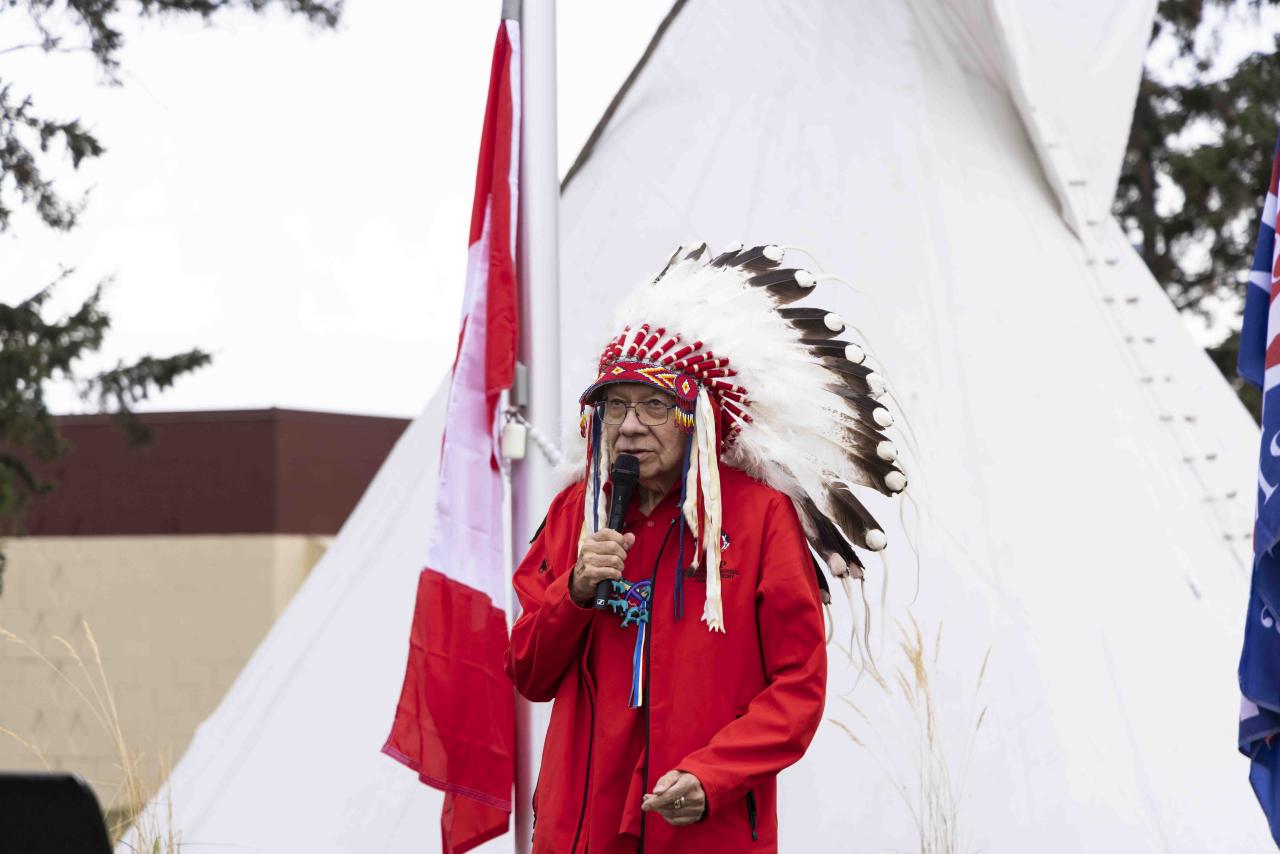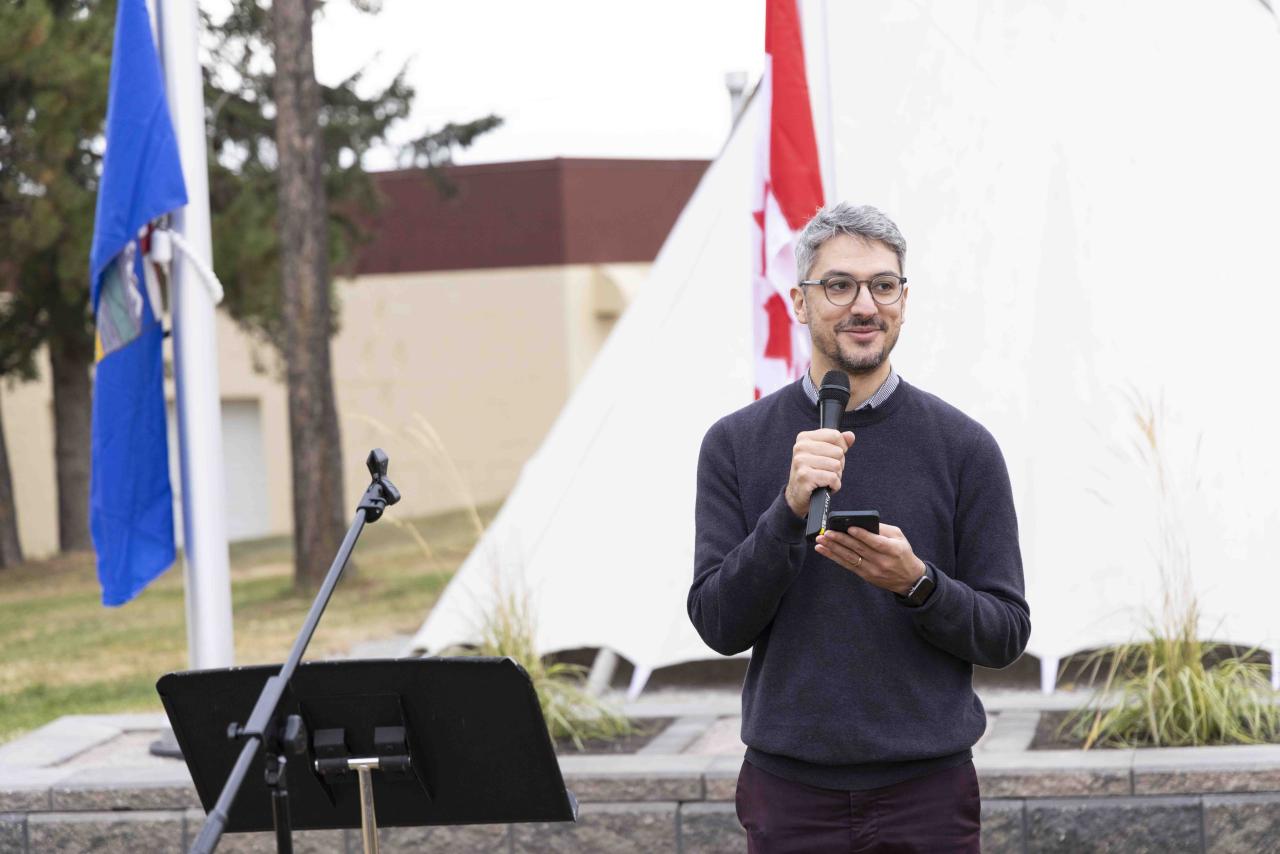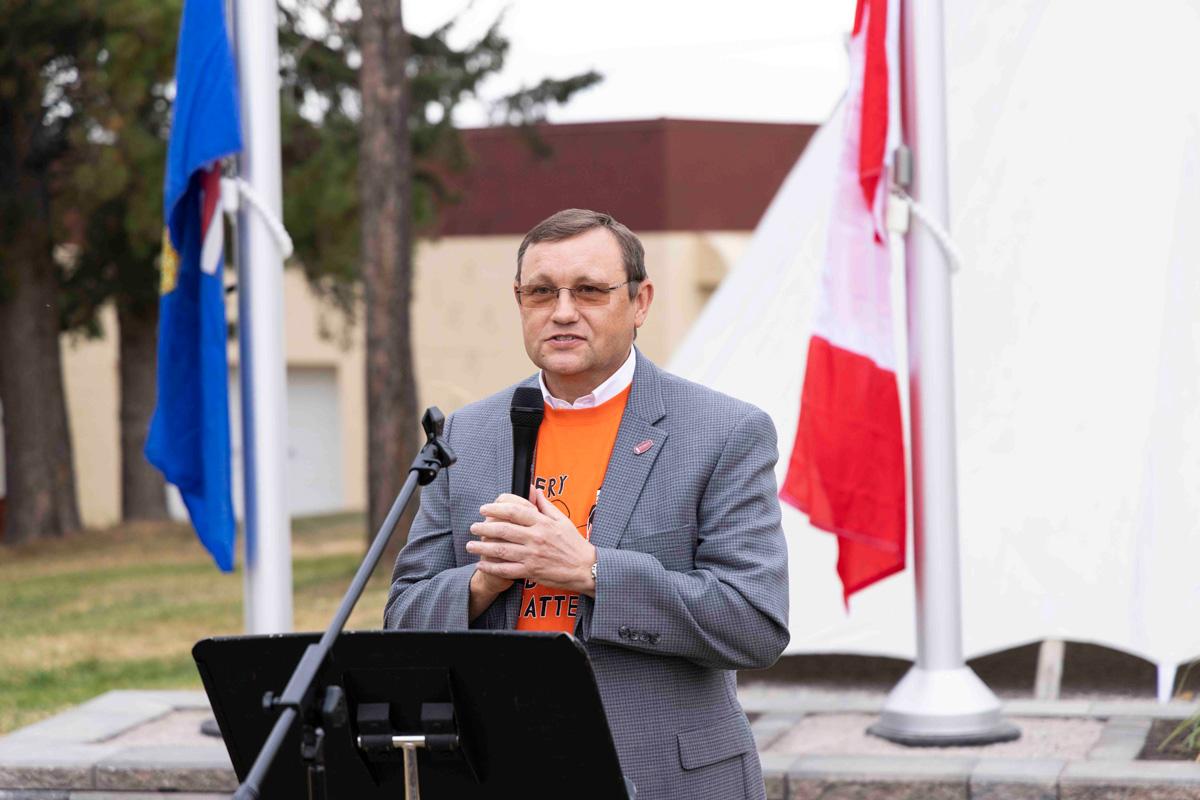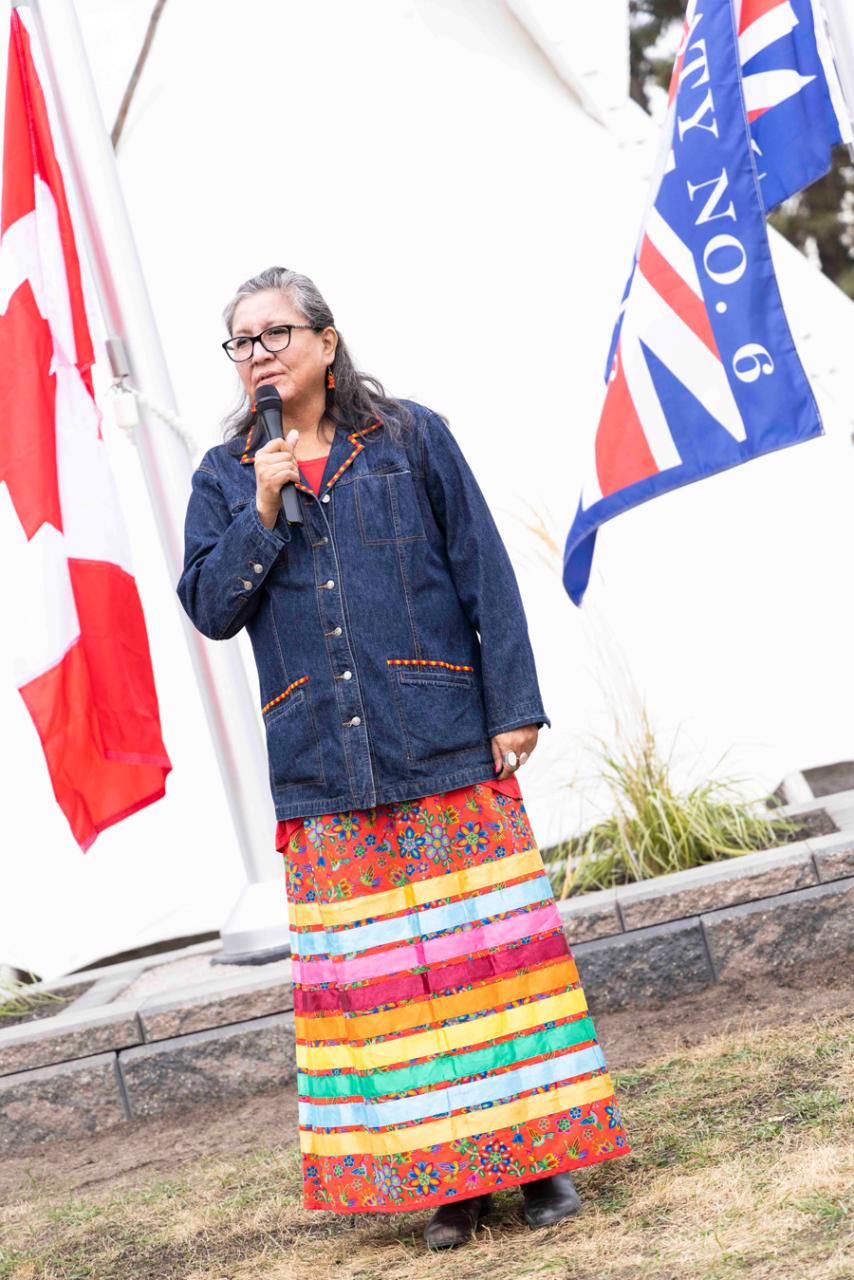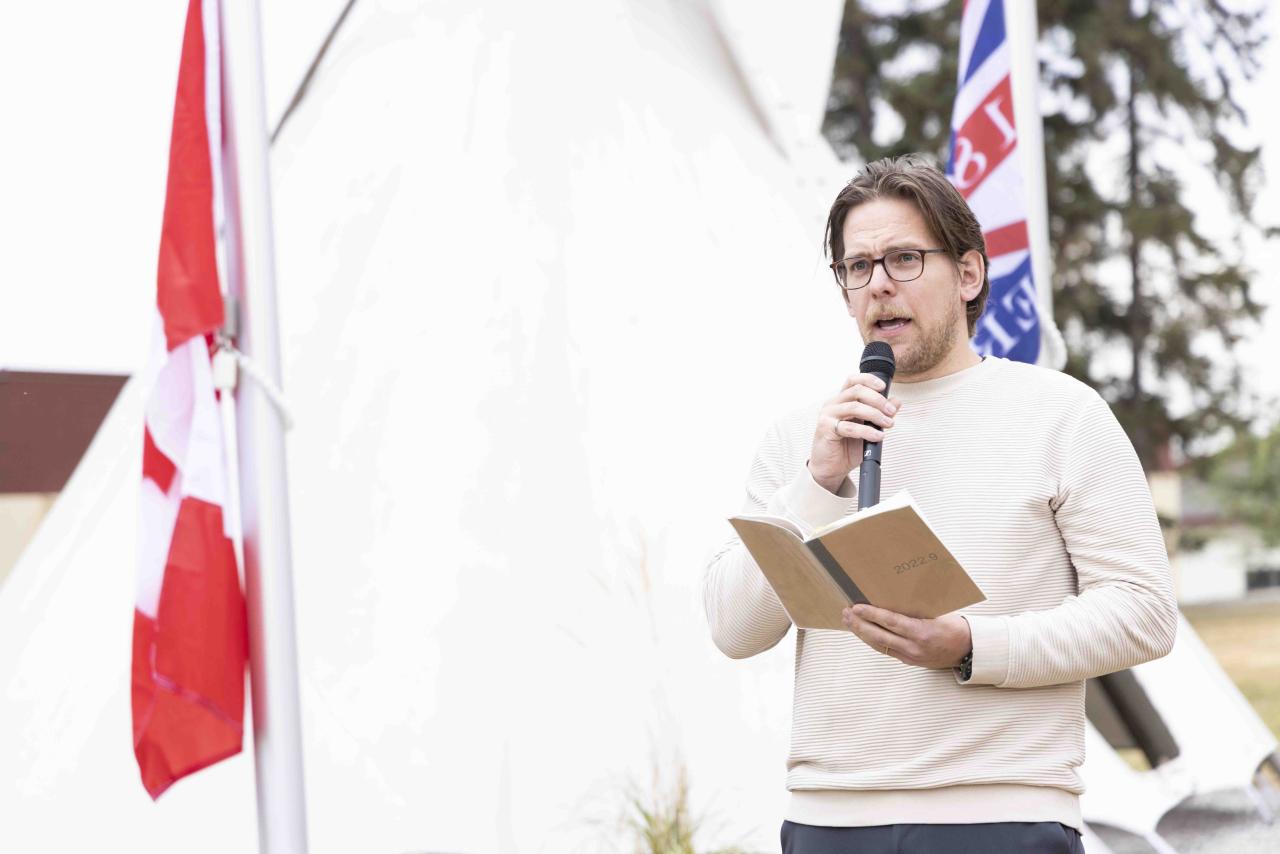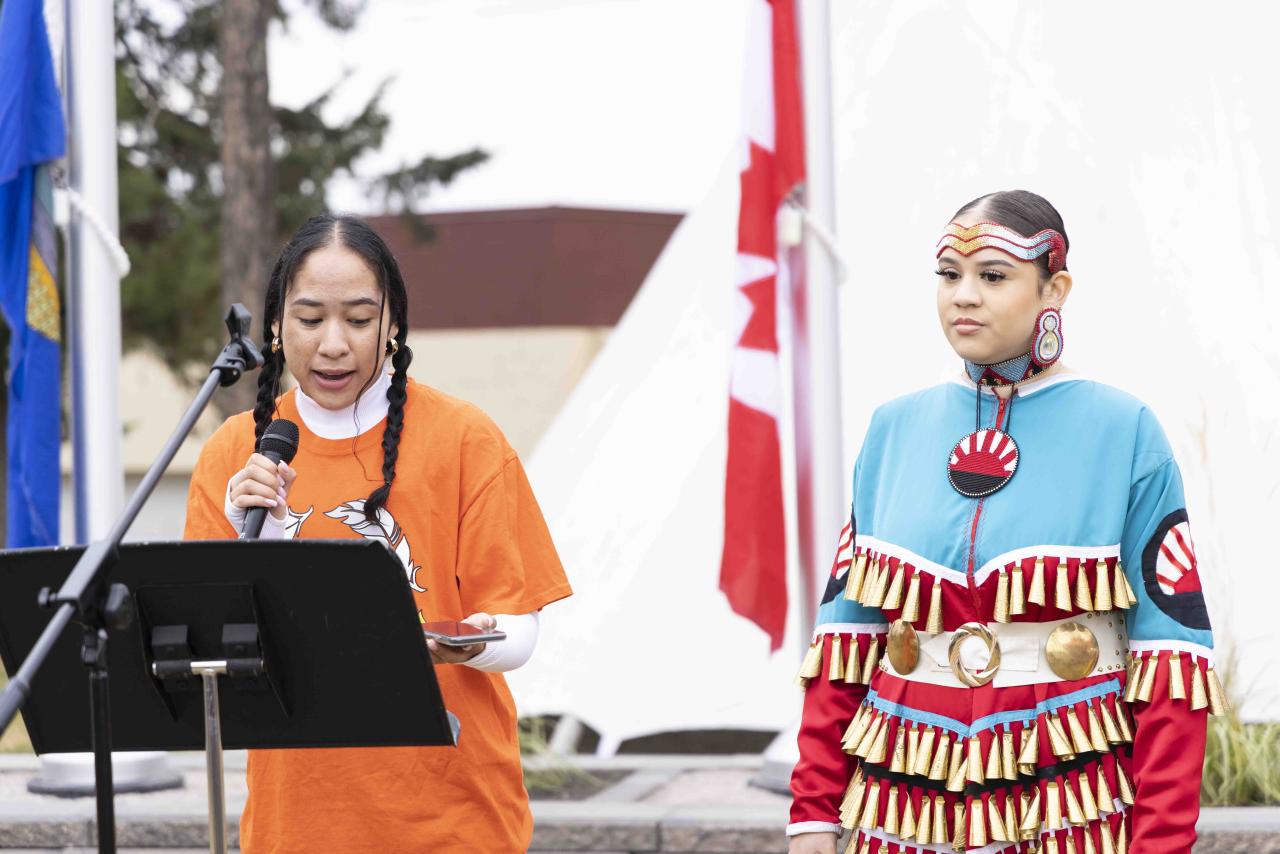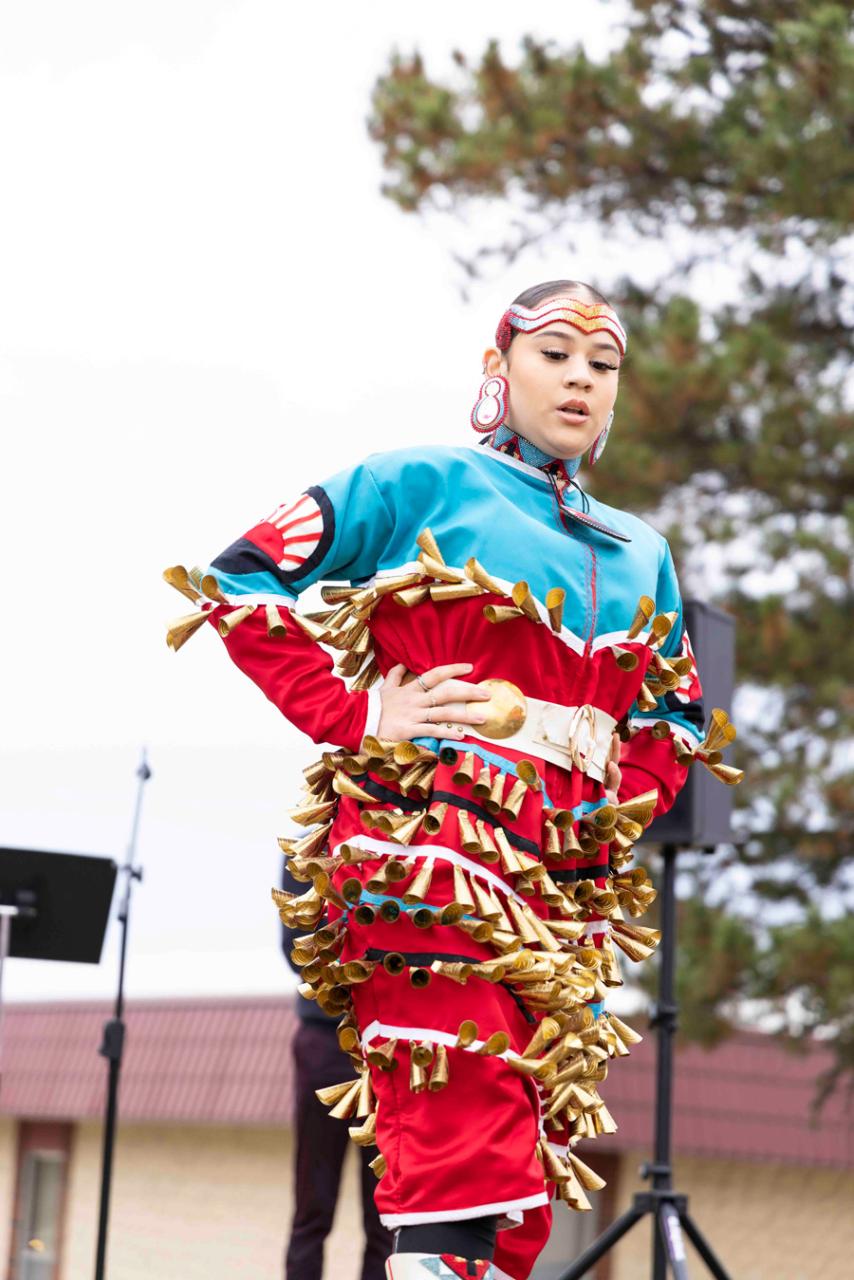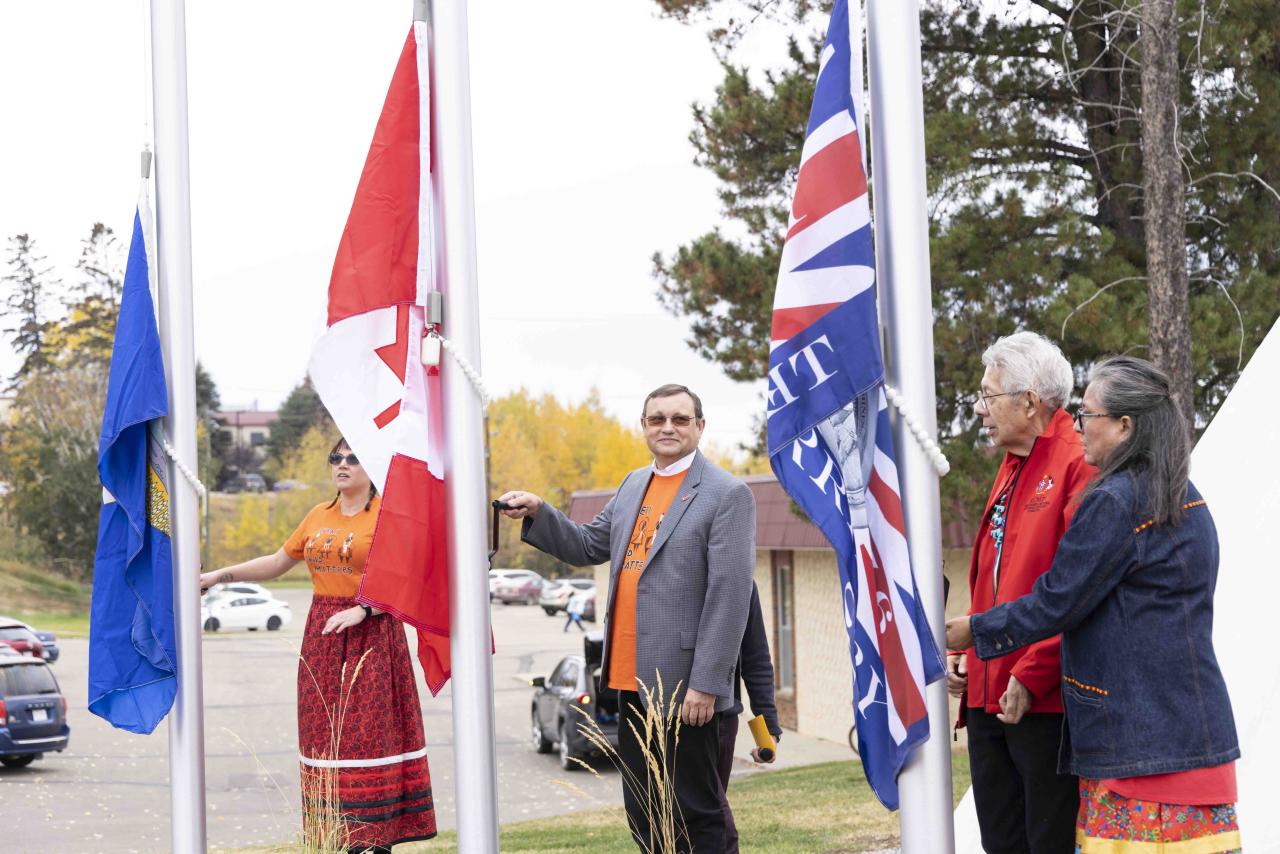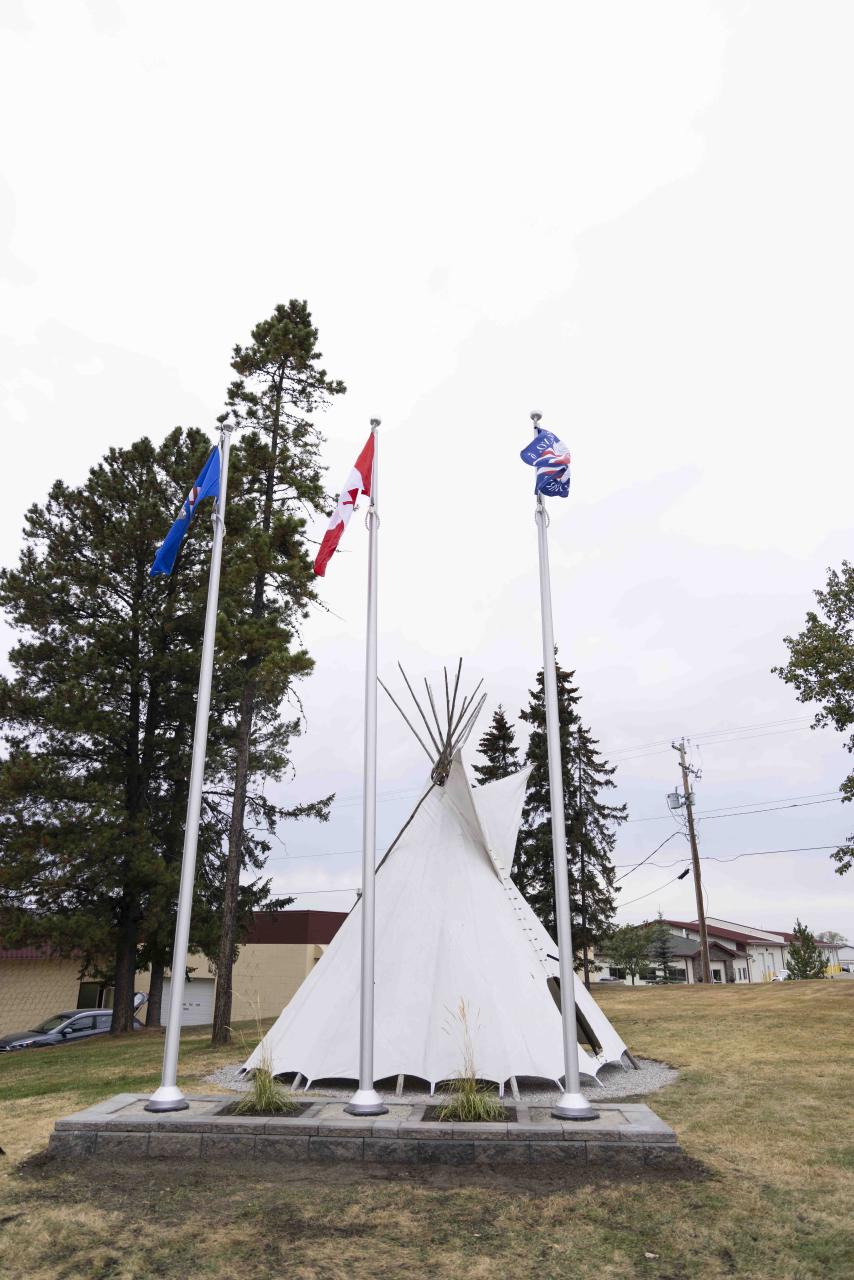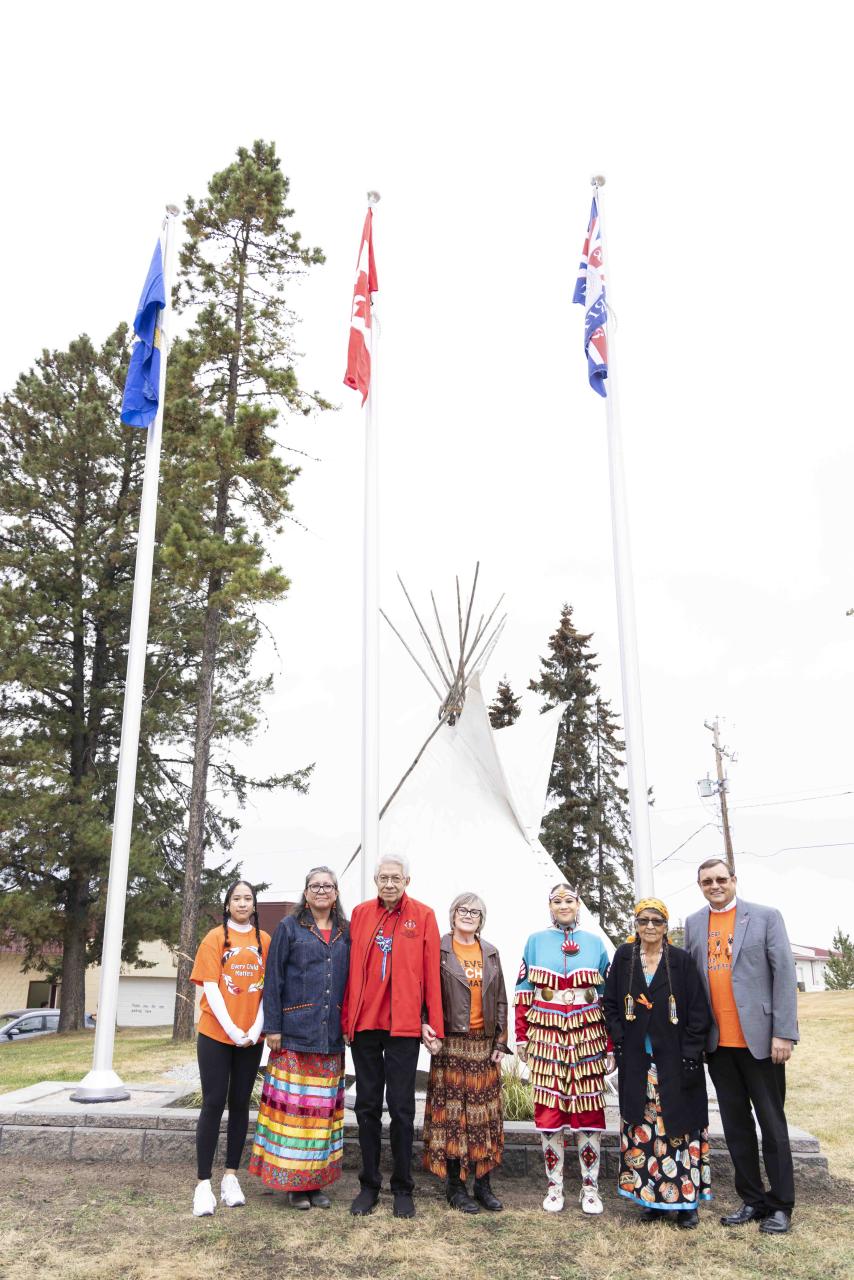On the eve of the National Day for Truth and Reconciliation, Burman University, in collaboration with its Indigenous partners, held a Treaty 6 flag installation ceremony. The Treaty 6 Flag was raised alongside the Canadian and provincial flag. The ceremony was held at the entrance of campus where the new installation will be permanently displayed alongside a teepee.
Dr. Eduardo Sola, Special Assistant to the President for Equity, Diversity and Inclusion and organizer of the event, reflected on the importance of recognizing as a campus the wrong that has been inflicted on the Indigenous community.
“Coming from a South-American Indigenous background on my mother's side, I can attest to how little post-secondary institutions in Brazil do regarding Truth and Reconciliation endeavours. It is painful to admit that during most of my own educational experience both in Brazil, in Europe, and in North America, issues of colonization were seldom discussed, if at all. I cannot highlight enough how refreshing it is to know that I work today for a higher education institution that is intentional about these issues. This path does not end here, and there is so much more to be done, but the fact that students on this campus will be able to see the Treaty 6 flag every time they come into campus, and be reminded of what it stands for, can certainly be a game changer for the next generations. I am honoured that this momentous occasion is my first experience as the new EDI director for our campus and I look forward to many more such opportunities in this process of healing.”
Dr. Eduardo Sola, Special Assistant to the President for Equity, Diversity and Inclusion
Taking part in the ceremony was Elder Mary Moonais, Elder Judy Louis, Elder Roy Luis and Dr. Claudine Louis. Each Elder shared with those gathered their own part in the communal journey towards Truth and Reconciliation.
Burman University acknowledges that we are located on Treaty 6 territory—the traditional and ancestral territory of the Cree, Dene, Blackfoot, Saulteaux and Nakota Sioux. We acknowledge that this territory is home to the Métis Settlements and the Métis Nation of Alberta, Regions 2, 3 and 4 within the historical Northwest Métis Homeland. We are grateful for the traditional Knowledge Keepers and Elders who are still with us today and those who have gone before us. We make this acknowledgement as an act of reconciliation and gratitude to those whose territory we reside on or are visiting.

